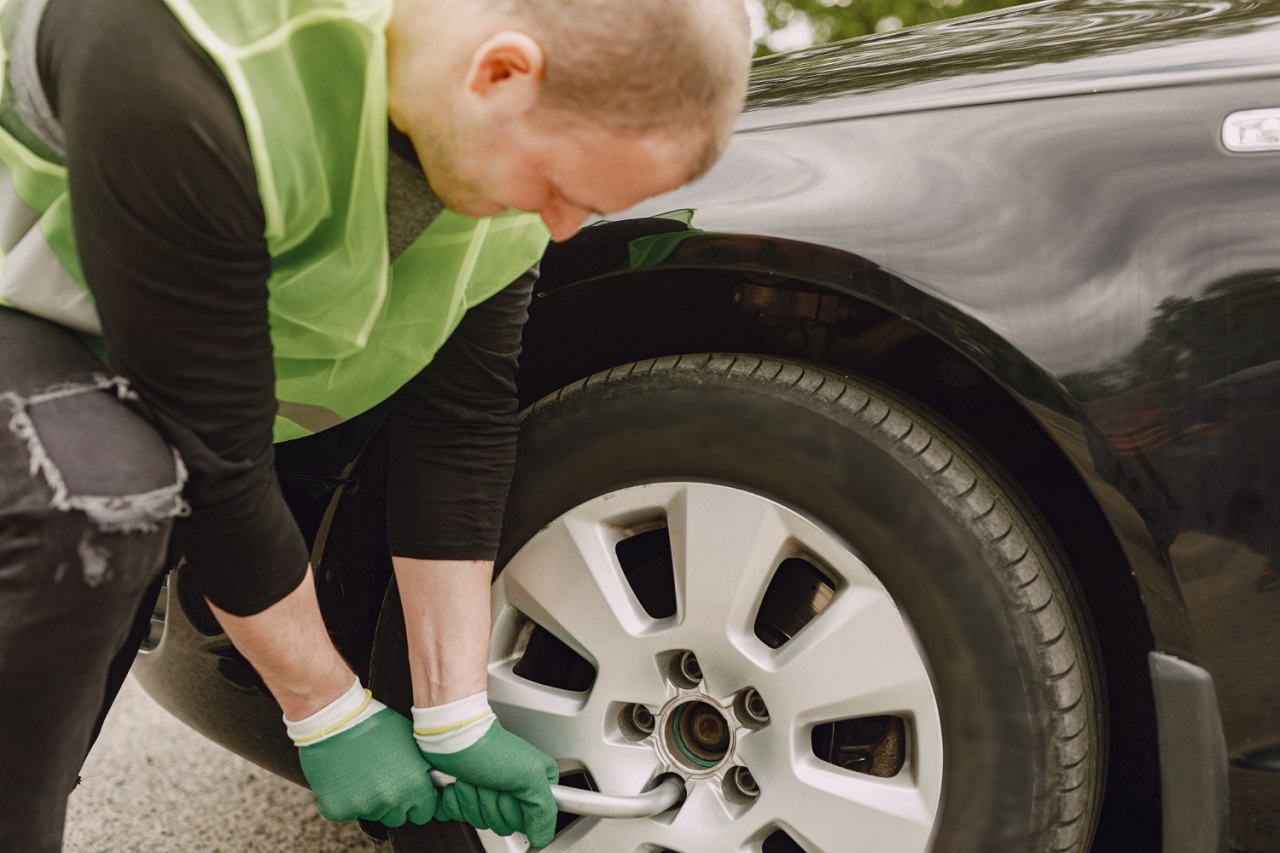No one wants to get a flat tire but sometimes, no matter how careful we are at driving and car maintenance to avoid a flat, it can still happen. A flat tire, like running out of fuel, can occur at the most inopportune time and leave us stranded on the side of the road.
That’s why it’s always best to be prepared for a worst-case scenario by knowing how to change a flat tire.
Importance Of Knowing How To Change A Flat Tire
Most people never bother to learn how to change a flat because they think it’s too difficult or they’re just not mechanically inclined.
However, it’s not as difficult as you may think and it’s a skill that everyone should know, especially if you frequently drive long distances or find yourself in remote areas.
There are a few reasons why:
1. You’re never too far from a flat tire.
2. It’s a skill that could one day save your life.
3. It can be empowering to know how to change your own tire.
4. It’s a great way to meet new people (or at least get their attention).
5. It’s a humbling experience (and we could all use a little humility now and then).
What You’ll Need To Change A Flat Tire
Aside from a working knowledge of how to change a flat tire, you’ll also need the following supplies:
1. A jack
2. A lug wrench
3. A spare tire that is properly inflated
4. A set of wheel chocks
5. (Optional) A flashlight
How To Change A Flat Tire
Now that you know why it’s important to know how to change a flat tire and what you’ll need, it’s time to learn the steps involved in actually changing the tire.
The process may seem daunting but if you take it one step at a time, you’ll be back on the road in no time.
Step 1: Find a Safe Location
The first step is to find a safe location to change your tire. If you’re on the side of the road, pull over as far away from traffic as possible. It’s also important to make sure that you’re on level ground.
If you’re changing your tire on an incline, your car could roll while you’re changing the tire.
Step 2: Put Your Car in Park and Apply the Parking Brake
Once you’ve found a safe location, put your car in park and apply the parking brake. This will help keep your car from rolling while you’re changing the tire.
Step 3: Make Your Car And Yourself More Visible
If you’re changing your tire on the side of the road, it’s important to make yourself and your car as visible as possible. You can do this by turning on your hazard lights and setting out flares or reflective triangles. This will warn drivers of your presence and help prevent accidents.
Your emergency kit should contain these warning devices so other people on the road can see you. These will also be very useful in case you call for roadside assistance for your flat tire problem.
Step 4: Loosen The Lugs Nuts
The next step is to loosen the lug nuts that hold the wheel in place. You’ll need to use your lug wrench for this.
Do not remove the lug nuts completely, just loosen them enough so that they can be removed by hand when you’re ready to take the wheel off.
Step 5: Jack Up The Car
Now it’s time to jack up the car. The process for doing this will vary depending on the type of car you have.
Most cars have a jack located in the trunk. Once you’ve found it, remove it from the trunk and place it under the car.
Consult your owner’s manual for specific instructions on where to place the jack and how to operate it.
Step 6: Remove The Flat Tire
Once the car is raised, remove the flat tire by unscrewing the lug nuts and pulling the tire off. Be careful not to lose any of the lug nuts as you remove the tire.
Step 7: Mount The Spare Tire
Now it’s time to mount the spare tire onto the car. First, line up the holes in the wheel with the bolts on the car.
Then, screw the lug nuts onto the bolts, tightening them by hand as much as you can.
Step 8: Lower The Car
Once the spare tire is mounted, it’s time to lower the car back down to the ground. Again, consult your owner’s manual for specific instructions on how to do this.
Step 9: Tighten The Lugs Nuts
Now that the car is back on the ground, it’s time to tighten the lug nuts. Use your lug wrench to tighten them as much as you can.
Do not over-tighten them, just make sure they’re tight enough that the wheel won’t come off while you’re driving.
Step 10: Test Drive
Before you hit the road, it’s always a good idea to take the car for a test drive to make sure everything is working properly.
Start by driving slowly to make sure the wheel is mounted correctly and that the lug nuts are tight. If everything feels normal, you can start driving at your usual speed.
Congratulations! You’ve just learned how to change a flat tire. Just remember, practice makes perfect. The more you do it, the easier it will become. And don’t forget to keep your emergency kit stocked with all the supplies you’ll need in case of a flat tire.
It’s a great idea to learn how to change a flat tire so you can be ready at any time. In case you just can’t figure things out or you don’t have the tools for the job, all you have to do is to call Agile Towing Company for reliable mobile flat tire service…


